iPhone Cases Made from Agricultural Waste and Recycled Plastic
by: TreeHugger Design, 2011-10-02 14:15:30 UTC
 Photo: Miniwiz
Photo: Miniwiz
The next time someone says your iPhone case looks like you found it in the trash, you can take it as a compliment. But that's only if you've got a
ReCase from
Miniwiz, made from 100% recycled agricultural waste and post-consumer plastic....
Read the full story on TreeHugger
Swedish Student Discovers a New Way To Purify Textile Effluent
by: Inhabitat , 2011-10-01 18:04:15 UTC

Dying is one of the most environmentally destructive parts of textile production, sending hormone-disrupting chemicals into waterways in big textile-producing countries like China, India and Bangladesh. But what if tainted effluent from textile production could be purified, leaving nothing more than water for factories to discharge? That’s exactly the problem that Maria Jonstrup, a doctoral student in Biotechnology at Lund University in Sweden, has been working on, and she recently made a breakthrough that could prevent harmful chemicals from entering the environment. So far Jonstrup’s technique has only been tested in the lab, but she plans to test it at a factory in India.
Permalink |
Add to
del.icio.us |
digg
Post tags: clean water, clothing production, eco textiles, Environment, Fashion, Maria Jonstrup, water purification
Green Wheels: Microcab H2EV
by: Ecofriend, 2011-10-01 09:24:12 UTC
Aravind Balasubramanya:

Microcab H2EVMicrocab reveals H2EV hydrogen fuel cell vehicle
The green machine
The H2EV is the latest hydrogen-fuel-based car launched by Microcab which has worked in collaboration with Delta Motorsport . The launch coincides with the launch of Honda’s hydrogen fueling station in Swindon which also happens to be a first in UK. A fleet of these Microcab cars will be on trial in an attempt to collect data on the ultra-low emissions they promise. Since manufacturer Lotus has also been associated with the engineering in this project, there is great optimism about the launch of this fuel cell car.
Green factor
The H2EV runs totally on hydrogen and the exhaust is water! You could not have gotten cleaner than this. This four-seater vehicle uses the reaction where hydrogen combines with oxygen releasing electricity and producing water-vapor as the only emission. In an age where competitors are striving to reduce the carbon footprint, this car totally eliminates it. With the growing hydrogen fuel infrastructure in UK, the H2EV presents a totally green option for the customers. Unlike fossil fuels that stand the danger of completely running out of availability, the earth faces no such shortage as far as hydrogen is concerned! Thus, we have a vehicle that can run on a green and abundantly available fuel.
The power train
The H2EV is powered by a 3kW engine which is connected to the fuel cell. The fuel cell generates electricity from the electrolysis reaction. The vehicle provides about 120 miles for each recharge of hydrogen under optimum running conditions. It easily provides an average of 100 miles otherwise. The car is rated to have a top speed of 40 miles per hour. Coventry and Birmingham Low Emission Demonstrator ( shortened as CABLED) have been presented a fleet of H2EVs for testing how well this technology can cope with the current infrastructure.
The highs
- Zero-emissions and useful exhaust - an unbeatable combination.
- Once it passes trials, mass production plans are already underway and can be executed with ease.
- Hydrogen is an explosive gas. It is very strongly reactive with air. But as far as safety concerns go, the H2EV’s fuel tank has been made ‘gunfire resistant’ according to company claims.
- The hydrogen fuel infrastructure is developing in the UK. And it has been taken up by giants like Honda. Add this to the already established fuel stations at Coventry University and in Birmingham. The future for this green car looks green!
- Lotus engineering in the car definitely adds lot of credibility to the vehicle.
- The car will be available in taxi and car options, thus serving a larger clientele.
- Unlike electric hybrids, this car can be refueled in a matter of minutes and not hours.
- These cars are going to be marketed as cabs and once they hit the roads, they will dramatically reduce the pollution.
The Lows
- At 40 miles an hour, there will definitely not be many vehicles on the road that you will outrun with this car. Slow and steady may be good but when there are vehicle options that are fast and steady, its time for more thinking.
- Though hydrogen fuel is the fuel for the future, with just three filling stations totally, there is a serious infrastructural difficulty for the car owners when it comes to refueling.
- The cost of commercial hydrogen fuel is high. The car cannot be recharged at home and so the owner has to take the car to great distances for even refueling (since there are very few stations) and this in itself will guzzle fuel.
- Most of the regular vehicles run on100 kW engines. This is a real dwarf at 3 kW!
Cost and availability
Once the trials are successful, mass production plans are on. Not much information is available in the cost section. There is talk that the vehicle will be available at the same price of gasoline cars. This means that it is at least three to four times costlier than other EV cars like the Nissan Leaf.
Word around the web
The car has won itself some instant fans and instant haters on the web. Monitoring the web chatter, we realize that the fans are blown away by the ‘green’ nature of the car. They believe that this is the car for the future for it carries the fuel for the future. The ‘haters’ are upset about the cost factor and the low availability of recharge options. Some do not even consider it as a car and term it a ‘gadget’ since it cannot go above 40 mph. There are some who are wondering as to why efforts were not made to get into hydrogen fuel in a ‘big’ way with larger engines, larger tanks and basically a larger car. There are many who wish to ‘wait and watch’ keeping their fingers crossed.


 What’s next: Eco friendly ways to clean nuclear waste
What’s next: Eco friendly ways to clean nuclear waste
by: Ecofriend, 2011-10-01 21:32:19 UTC
Munmun Goswami:

Nuclear WasteTo save Environment its essential to dispose nuclear waste properly.
As we know it
Nuclear metals are the most devastating form of potent energy. So are the wastes that are produced when the energy generating process is over. Although a more patient killer as compared to its biotic counterparts like the bacterium, Clostridium Botulinum and the famous Japanese delicacy, Fugu, nevertheless, it is a killer, slow or quick does not matter. Apparently, there has to be some way in which these wastes could be disposed off. They are generally of no use when the core uranium metal has been totally exposed to the fission reaction. The question is which is the safest way to make it happen?
The conventional ways of disposing these wastes off are harmful. They often allow the slow leakage of radioactivity from the heavy metals from where they have been buried (the remaining butt of heavy metal is generally buried in the soil). The best way to calm down nature’s daunting threat is to use another natural weapon. The best natural weapon available so far is the biological one. Bacteria and algae have been the best scavengers since the blooming of life on the planet. Here too, they are the best possible way available to clear off the heavy metal particles. The question now is, whether we need to take such options into consideration at all. We discuss this in our next paragraph.
Need for a change
Pollution is growing by leaps and bounds. Pollution of every kind, every strata has seen an indiscriminate encouragement to grow, persist and do much unwanted harm as possible. Mankind is in no more a healthy position to allow more forms of this problem to raise their hoods. Moreover, nuclear waste is not just about pollution, it is about much more, about terrorism, about violence and about getting used at wrong hands. So it is absolutely necessary that the nuclear waste generated after energy has been generated is disposed off in a proper manner to ensure that any of the above possibilities does not arise.
What’s next?
1. Pond algae to help clean up nuclear wastes effectively

Pond algaResearchers from Northwestern University and Argonne National Laboratory have seen that common freshwater algae has ability to remove strontium 90.
It has been found out that the fresh water bright green algae, Closterium Moniliferum has the capability to differentiate Strontium-90, a potent damaging agent found in nuclear waste. Generally, Strontium-90 is similar to Calcium in its physical properties and is very difficult to decipher from the nuclear waste which also contains large quantities of calcium. But his natural scavenger has the immense ability to do so. It actually works by concentrating the metals that are present around it in the water. In the process, it absorbs Strontium, barium and calcium from the water around it. It then creates a concoction of the metals and thus processes them into crystals. It is at this point that the crystals of Strontium-90 are recognised and are differentiated from the calcium crystals. Calcium then spit out into the surrounding water, while the heavy metals are accumulated inside the cells. These biotic cells can hence be used safely to discard off the harmful and poisonous radioactive metals.
2. Microbes that generate electricity while cleaning nuclear wastes

MicrobesA team of researchers at Michigan State University has come up with the answer to how the mcrobes generate electricity while cleaning up nuclear waste.
The organism under consideration in this case is Geobacter, a bacterial type that shows presence in the soil. This bacterium has appendages, or small mobile parts outside its cellular body, also known as nanowires. This fact was uncovered by a team of microbiologists led by Gemma Reguera. Normally, in other bacterial cells, these appendages are used for purposes like collection of food and movement. But in Geobacter, these appendages act as organs for cleaning up nuclear waste and formulators of electricity. Better put, these nanowires help the bacteria to survive and grow in an environment that has been contaminated with heavy metals. Strange, but these little boons seem to have adapted themselves to the dominating human ways. A pilot project has also been successfully executed using these bacteria. Acetate was first added to the source of uranium. Acetate is the diet of Geobacter and thus helped the bacterial colonies to multiply quickly. The uranium was cleared up as expected. To boost the process, researchers have also given birth to an advanced strain of the bacteria which would contain greater number of appendages, thus fastening the process of clearing up nuclear wastes.
3. Researcher hopes to clean radioactive waste with stinky bacterium

Stinky bacteriumThe bacteria prompt an electron transfer that turns uranium into mineral uraninite
The microbe that we would encounter in this entry is Desulfovibrio Vulgaris. The waste scavenging property of this bacterium has only been discovered as yet. Further experiments and research work are still to find detailing. The proposal of using this bacterium was given by the researcher Judy Wall. This bacterium processes the nuclear metal so as to catalyse an electronic transfer which would convert the unstable Uranium into a more stable Uranite form. Uranite is heavy and would sink to the bottom of the water source where it had previously been present in the radioactive state. This bacterium can hence be a potent nuclear waste scavenger in the future.


 Size Matters: World’s largest solar park in Germany
Size Matters: World’s largest solar park in Germany
by: Ecofriend, 2011-10-01 04:25:51 UTC
Radhicka S Saxena:

Largest Solar ParkGermany Covers Old Pit Mine with World’s Largest Solar Park
The photovoltaic solar park near Senftenburg in Germany has bowled over many. This remarkable spectacle now has something more to boast about. A new section has been added to it lately. What makes that news even more sensational is that due to the new addition, the plant will now become one of the biggest solar parks in the world! This annex was constructed within three months, quite an achievement, and has been applauded by many for its unmatched capabilities. The revolutionary site was inaugurated on 27th April 2006 and will surely set an example to other such solar projects.
What is it
Eastern Germany’s hi-tech solar park was always a marvel, but now the entertainment zone has been upgraded with a new section. Developed by Unlimited Energy, this undertaking has been quite a spectacle. An old and unused mine pit was used for building this new sector. There are many such sections of barren land that are cast off and abandoned. Utilizing them is to construct solar generators is quite innovative and thought provoking.
Most of the times, such territory gets discarded because it contains elements that can harm human life. Hence, constructing solar powered equipment here is a good way to undo the damage. Also, this ensures that the land is not put to any hazardous or injurious use in the future. There is another awesome realization achieved at this site, the time frame within which the plant was completed.
Kudos to Unlimited Energy, under whose workmanship this marvelous structure was erected in just under three months. The company has proved its farsightness in many other ways. Another yet notable addition to the park is the inclusion of wildlife reserves and plantation. In between the solar installation, the company has provided shelter for wildlife and also cultivated local plants.
How big is it
The plant is worth 40 million euro or 48 million US$. The power capacity of the plant is also astounding. The new section generates about 78 megawatts of energy, increasing the capacity of the entire plant to a whopping 166 megawatts. It also has about 62 central inverter stations to help transform the energy absorbed from sunrays and put it into use. Also around 330,000 crystalline PV modules have been assembled on the site.
In fact, Saferay company has garnered quite a reputation for the solar farms it has built throughout Germany. Each is put up with the same efficiency and built within an astonishing time limit. This is a remarkable feat considering it has been in the business for about a year.
How green is it
The original plant was built on the former military ground at Pocking and was saved about 10,000 tons of CO2 annually. This number will increase after inclusion of the new annexure. Also, the plant previously powered up 3300 Germans homes. With the new addition, the plant will now supply power to 25,000 homes in Germany.
To add another feather to its cap, the plant is also very cost effective. The foundation has been fabricated with concrete or piles. Any type of material from steel racks, aluminum, and wood has been used here based on their prices - this is referred to as the flexible installation technology. It applies the master-slave inverter concept developed by Shell churn out energy.
The plant operates pretty well in Germany, naturally, its power will be multiplied in places blessed with ample solar light. All these facts will definitely give many companies incentive to develop the same structure in other parts of the world.
The predecessors
This move by Saferay has caused quite a stir and has obviously made competitors green with envy. What has caused further amazement is the rapid pace at which work was completed at the site. Many companies will therefore be enticed to follow in Saferay’s footsteps. Talks about more such constructions are already doing the rounds.
Lately, shell announced another solar plant near Leipzig that will be the largest in the world. Few others are the 15 megawatt site in South Korea and 100 megawatt structure in Israel. Then of course, there is the venture by GE; the Powerlight plant with a capacity of 11 megawatts in Portugal. Another plant in Portugal will be the 116 megawatt installation put up by a group of German companies.


 composite environment: digital housing
composite environment: digital housing
by: Designboom - Weblog, 2011-10-01 06:59:00 UTC
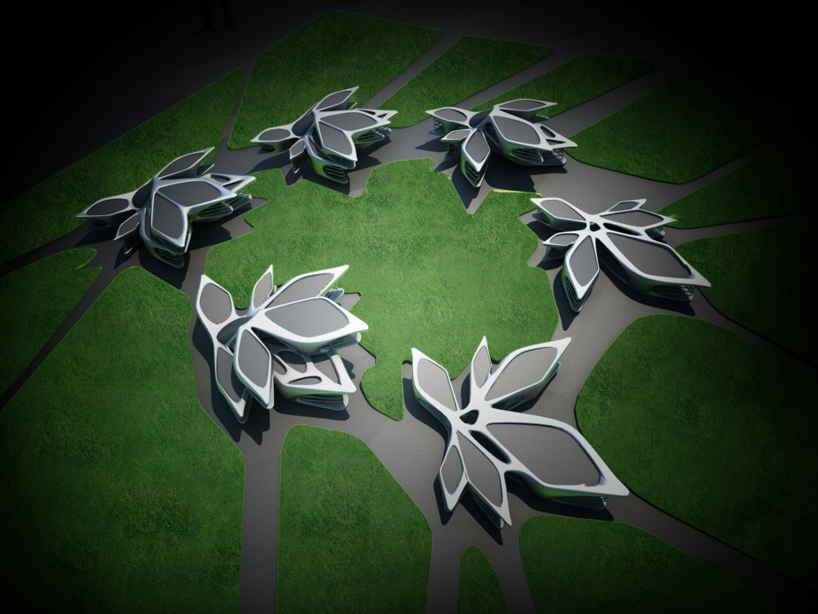
these organic petal-shaped dwellings are climate responsive to maintain optimal comfort and privacy for its inhabitants.
read more
bashko trybek: serpent modular shelving system
by: Designboom - Weblog, 2011-10-01 09:55:00 UTC
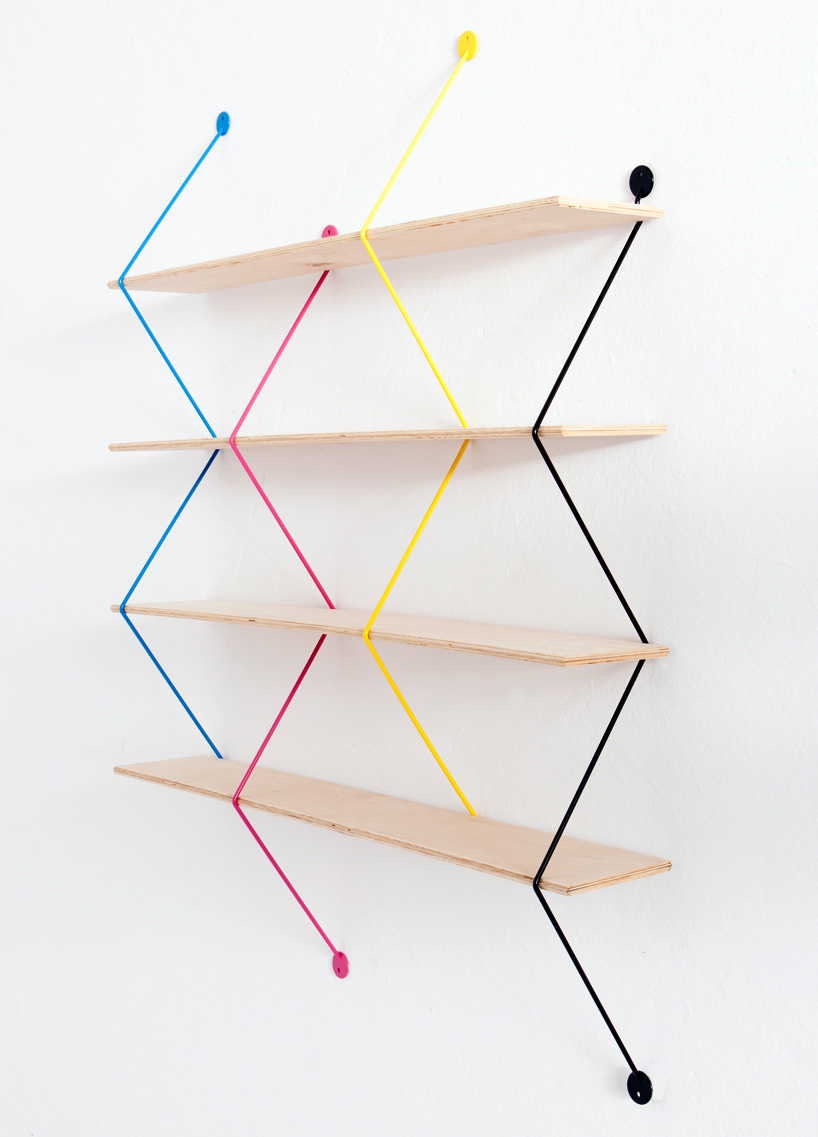
four colorful wires weave in and out to support wooden planks resulting in shelving unit that is not only playful but also adjustable.
read more
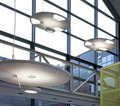


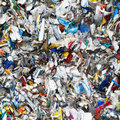
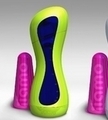





Comments by our Users
Be the first to write a comment for this item.